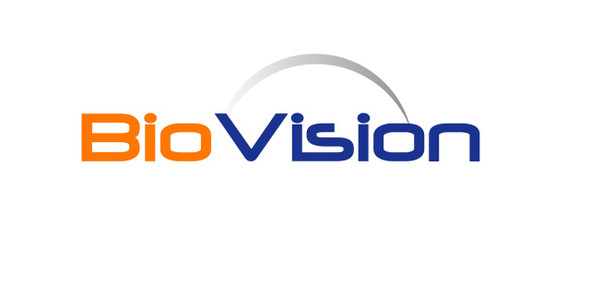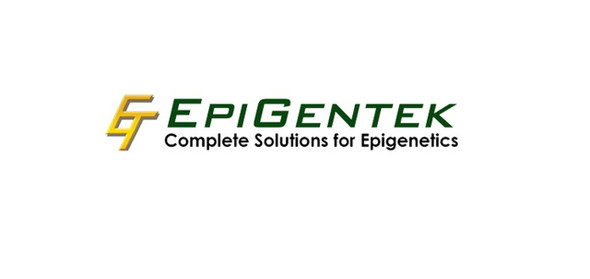Description
abia SARS-CoV-2 IgG/IgM is an enzyme immunoassay for the qualitative detection of antibodies to SARS-CoV-2 that causes coronavirus infection COVID-19, in human serum or plasma.
The results of this or any other diagnostic assay should be used and interpreted only in the context of the overall clinical picture. For professional use only.
Clinical value
The disease COVID-19 is caused by coronavirus SARS-CoV-2 (2019-nCoV). This virus is the seventh coronavirus that has been proven to infect humans. It is the third coronavirus that has emerged in the past 2 decades, causing multinational outbreaks and carrying substantial morbidity and mortality. There are no specific clinical features of COVID-19 and symptoms are similar to those of other severe acute respiratory infections, such as MERS and SARS1.
Four structural proteins are essential for the life cycle of COVID-19. Homotrimers of S proteins make up the spikes on the surface of virus particles and it is the key for the viral attachment to host receptor. The M protein has three transmembrane domains and it shapes the virions. The E protein plays a role in virus assembly and release. The N protein contains two domains, both of them can bind virus RNA2.
Principle of the test
abia SARS-CoV-2 IgG/IgM is an indirect two-step immunoassay for the detection of antibodies to SARS-CoV-2 (COVID-19). The assay is based on microwells coated with recombinant antigens (rAg) of SARS-CoV-2 sequence. The conjugate contains a mix of peroxidase-labeled anti-human IgM and IgG antibodies.
Serum or plasma samples are added to the wells and if antibodies against SARS-CoV-2 are present in a sample, they form stable complexes with antigens immobilized on the wells.
Then the antigen-antibody complexes are identified by the addition of peroxidase-labeled anti-human IgM/IgG antibodies.
The unbound components are removed by washing. After the addition of the solution containing TMB, the wells with bound conjugate develop a blue color which is converted to yellow after the reaction has been stopped with sulphuric acid.
The color intensity is directly proportional to the concentration of SARS-CoV-2 antibodies in the specimen and can be read at 450 nm or 450 and 620–680 nm.
Kit contents
| S | XL | ||
| SARS-CoV-2 Ag coated plate | 1 | 5 | polystyrene plate 12 × breakable 8-well strips coated with a mix of rAg of SARS-CoV-2 |
| Conjugate (concentrated 21-fold) | 1 × 0.8 ml | 1 × 3.0 ml |
mixture of peroxidase-labeled anti-human IgG/IgM Ab; transparent or slightly opalescent, colorless or pale yellow liquid; preservatives: ProClin 300 0.04 %, gentamicin sulfate 0.0009 %, 4-Dimethylaminoantipyrine 0.009 %
|
| Conjugate diluent | 1 × 12 ml | 3 × 25 ml | transparent or slightly opalescent yellow liquid; preservatives: ProClin 300 0.1 %, phenol 0.01 % |
| Positive control (inactivated) | 1 × 1.5 ml | 1 × 1.5 ml |
ready to use; mixture of heat inactivated negative human serum and humanized animal antibodies to recombinant SARS-CoV-2 antigens; transparent or slightly opalescent, red colored liquid; preservatives: ProClin 300 0.1 %
|
| Negative control (inactivated) | 1 × 2.0 ml | 2 × 2.0 ml |
ready to use; heat inactivated negative human serum with phosphate saline solution; transparent or slightly opalescent, green liquid; preservatives: ProClin 300 0.04 %, gentamicin sulfate 0.001 %, sodium azide 0.19 %
|
| Sample diluent 1 | 1 × 12 ml | 1 × 60 ml |
ready to use; preliminary sample diluent; phosphate-saline solution; transparent or slightly opalescent, violet-blue colored liquid; preservatives: sodium azide 0.09 %
|
| Sample diluent 2 | 1 × 12 ml | 2 × 25 ml |
ready to use; phosphate-saline solution with addition of casein bovine milk solution (0.96 %); transparent or slightly opalescent, pink colored liquid; sediment may form; preservatives: thimerosal 0.007 %, sodium azide 0.097 %
|
| Washing solution (concentrated 25-fold) | 1 × 50 ml | 1 × 120 ml | phosphate saline buffer; colorless or pale yellow liquid; without preservatives |
| TMB (concentrated 11-fold) | 1 × 2.5 ml | 2 × 3.5 ml | solution containing TMB; transparent colorless liquid (coloration possible); without preservatives |
| Substrate buffer | 1 × 25 ml | 1 × 70 ml | citric acid (0.64%) solution (pH 4.1-4.3), containing H2O2; colorless liquid; preservatives: ProClin 300 0.04 % |
| Stopping reagent 0.2M H2SO4 | 1 × 25 ml | 1 × 90 ml | ready to use; 0.20 mol/l sulphuric acid solution; colorless liquid; without preservatives |
| Protective film | 2 | 10 | |
| Plastic dish | 2 | - | |
| Plastic zip-lock bag | 1 | 5 |
All components are stable until expiration date of the kit when stored at 2–8 ºC in a tightly sealed package. Expiration date is indicated on the package.
The device is available in two different variants; DK.073.01.3 with 96 determinations (S) and DK.073.05.3 with 480 determinations (XL).
Materials and equipment required but not provided
– purified water
– automatic or semiautomatic, adjustable or preset pipettes or multipipettes
– disposable pipette tips
– disposable plate for preliminary dilution
– microplate incubator set at 37.0 ± 1.0 °C
– automatic microplate washer
– microplate reader equipped with 450 nm or with 450 and 620–680 nm filters
Safety notes
– human origin material used in the preparation of the negative control and positive control has been tested and found non reactive for hepatitis B surface antigen (HBsAg), antigen p24 HIV-1, antibodies to hepatitis C virus and antibodies to human immunodeficiency virus (HIV-1 and HIV-2). The positive control was prepared using humanized animal antibodies to recombinant SARS-CoV-2 antigens
– as no known test method can offer complete assurance that infections agents are absent, reagents and samples should be handled as if capable of transmitting infectious disease; any equipment directly in contact with samples and reagents should be considered as contaminated
– do not eat, drink, smoke, or apply cosmetics in the laboratory
– avoid any contact of the reagents and samples with the skin and mucosa; wear lab coats and disposable gloves when handling them; thoroughly wash your hands after work
– avoid spilling samples or solutions containing samples. Wipe spills immediately and decontaminate affected surfaces
– all materials contacted with specimens or reagents, including liquid and solid waste, should be inactivated by validated procedures (autoclaving or chemical treatment) and disposed in accordance with applicable local law regulations
Precautions
– do not use reagents without label or with damaged label/package
– do not use expired reagents
– do not change the assay procedure; perform all subsequent steps without interruption
– do not mix reagents from different lots
– do not mix the caps of vials
– do not run the EIA test in the presence of reactive vapours (acid, alkaline, aldehyde), dust or metals
– do not let the wells dry once the assay has been started
– do not use the same container and tips for different liquid components of the kit and samples
– do not reuse the coated plates
– do not reuse the removed protective film
– do not expose the reagents to excessive heat or sunlight during storage and test procedure
– do not freeze the reagents
Collection and handling of specimens
– collect blood specimens according to the current practices
– use undiluted heparin/EDTA/citrate plasma or serum for testing; performances of the test have not been evaluated on other biological fluids
– separate the clot or red cells from serum or plasma as soon as possible to avoid any haemolysis
– do not use contaminated, hyperlipaemic or hyperhaemolysed specimens
– pooled specimens must not be used since the accuracy of test with such specimens has not been validated
– before testing samples with observable particulate matter should be clarified by centrifugation
– suspended fibrin particles or aggregates may yield reactive results
– do not heat the samples
– freeze/thaw of the tested samples is not acceptable
Procedural notes
– before use wait 30 minutes for the reagents to stabilize to room temperature (18–24 °C)
– check appearance of the reagents
– lost vacuum in the bag of the coated plate will not affect the performance of the test
– check the pipettes and other equipment for accuracy and correct operation
– the washing procedure is a critical step; for the detailed washer settings see section “Washing procedure”
– for the description of test procedure with the automated analyzers see section “Automated analyzers”
Washing procedure
Please contact your representative for protocols for recommended washers and procedures.
In general the following protocol is recommended:
– flow-through washing with a volume not less than 350 μl per well is used. When using a microplate washer for which this is not possible, ensure that the well is completely filled with a slight positive meniscus without overflow
– allow a soaking time of at least 40 seconds
– perform this procedure 4 times in total
– do not allow the wells to become dry during the assay procedure
– ensure that no liquid is left in the well (use double aspiration in the final step where possible)
– avoid to tap out the plate
– residual volume lower than 10 μl is not critical for following steps of the test procedure
– when using a microplate washer clean the wash head frequently to prevent contamination







